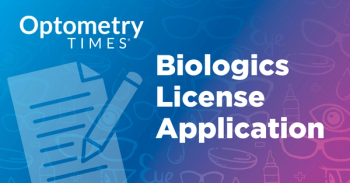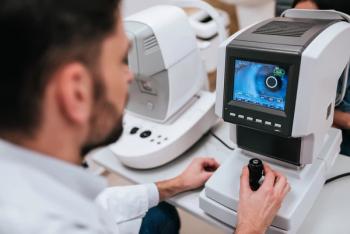
North Dakota law establishes optometric telemedicine guidelines
The law is the product of a 2-year collaborative effort by the North Dakota Optometric Association and the North Dakota State Board of Optometry.
A new law in North Dakota works to clarify guidelines for optometric telemedicine services in the form of amendments to the state’s scope act.1 HB 1267, which expands the North Dakota Board of Optometry’s (NDOA) authority, was signed into law March 24 by Governor Kelly Armstrong, according to a news release.
The North Dakota Optometric Association and the North Dakota State Board of Optometry have worked collaboratively on the bill for the past 2 years.1
“This is a big win for North Dakota in so many ways,” Kim Hacker, NDOA executive director, said in the release. “We were successful in the passage of a bill to enhance safety and accountability around optometric telemedicine, but we did so much more.”
The release stated that "the bill addresses the growing need for clear guidelines in remote eye care" and highlights the growing role that grassroots engagement is playing within North Dakota. Previously, North Dakota’s existing scope of practice remained unamended for over 2 decades.1 The NDOA worked jointly with the state board to “define and implement clear guardrails for telemedicine services,” according to the release.
The bill does not implement a scope of practice expansion, and instead makes amendments to sections 43-13-01, 43-13-02, 43-13-05, 43-13-07, 43-13-08, 43-13-13, 43-13-13.2, 43-13-13.3, 43-13-15, 43-13-16, 43-13-17, and 43-13-19 of the North Dakota Century Code relating to optometrist licensure.2
Particularly for Section 43-13-13.2, the section was amended from “Certification requirements – Notification” to “Requirements to practice optometry – Informed consent.” The amended third item now reads: “An optometric telemedicine provider-patient relationship is established when a patient seeks optometric services from a provider, and the provider agrees to provide optometric services to the patient except in an emergency. The provider-patient relationship may be expressly created or created through implication; however, the provider-patient relationship is not created through receipt of patient health information by the provider unless a prior provider-patient relationship exists. The initial patient relationship must be established through an eye examination conducted by a licensed optometrist with a physical location in this state.”2
The amended fourth item reads: “A licensed optometrist may act as a distant site provider and use telemedicine to provide care in accordance with standards of practice established by the board by rule. Telemedicine services may include consultation, diagnosis, and treatment for ocular diseases, provided that the optometrist complies with the regulations under this section. Before providing any optometric services to a patient via telemedicine, the provider first shall provide appropriate verification of the provider’s identification, licensure, and current contact information.”2
Finally, the amended fifth item states: “Informed consent regarding the optometric services to be provided via telemedicine must include, at a minimum, information regarding the provider’s technology used to provide optometric services via telemedicine and how to mitigate or resolve any technological disconnection or issue.”2
HB 1267 was introduced in the North Dakota House of Representatives on January 13, 2025, was received by the Senate on February 17, then signed by the governor in March.1
The NDOA’s legislative committee was guided by the AOA’s (American Optometric Association) State Government Relations Committee (SGRC) and advocates in nearby state affiliates, who were met with at multiple points of the legislative process, including the attendance of an AOA SGRC Regional Advocacy Meeting in Dallas, Texas in October 2024.1
“That was more instrumental for us as a group—everybody stepped up and learned together,” Hacker says. “We leaned on SGRC in a significant way, as well as our fellow affiliates, and for that we couldn’t be more grateful.”
References:
North Dakota secures telemedicine provisions, ignites grassroots advocacy. News release. American Optometric Association. April 24, 2025. Accessed May 5, 2025.
https://www.aoa.org/news/advocacy/state-advocacy/north-dakota-secures-telemedicine-provisions-ignites-grassroots-advocacy Sixty-ninth Legislative Assembly of North Dakota. Engrossed House Bill No. 1267.
https://ndlegis.gov/assembly/69-2025/regular/documents/25-0935-02000.pdf
Newsletter
Want more insights like this? Subscribe to Optometry Times and get clinical pearls and practice tips delivered straight to your inbox.










































